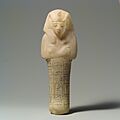Nineteenth Dynasty of Egypt facts for kids
Quick facts for kids
Nineteenth Dynasty of Egypt
|
|||||||||
|---|---|---|---|---|---|---|---|---|---|
| 1292 BC–1189 BC | |||||||||
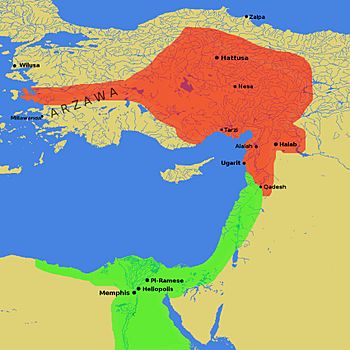
Egypt and the Hittite Empire around the time of the Battle of Kadesh (1274 BC)
|
|||||||||
| Capital | Thebes, later Memphis and Pi-Ramesses | ||||||||
| Common languages | Egyptian language | ||||||||
| Religion | Ancient Egyptian Religion | ||||||||
| Government | Absolute monarchy | ||||||||
| Pharaoh | |||||||||
| Historical era | Bronze Age | ||||||||
|
• Established
|
1292 BC | ||||||||
|
• Disestablished
|
1189 BC | ||||||||
|
|||||||||
The Nineteenth Dynasty of Egypt (also called Dynasty XIX) was a powerful family of rulers in Ancient Egypt. It is known as the second dynasty of the New Kingdom period. This dynasty lasted for about 103 years, from 1292 BC to 1189 BC.
Together with the 20th Dynasty, it forms an era called the Ramesside period. The dynasty was started by a man named Ramesses I. He was a vizier (a high-ranking official) whom Pharaoh Horemheb chose to rule after him.
Contents
History of the 19th Dynasty
Egypt's Changing World
In earlier times, the pharaohs of the 18th Dynasty easily expanded Egypt's power. They faced little challenge from other kingdoms. However, things changed a lot by the end of that dynasty.
A powerful group called the Hittites grew stronger. They started to control areas in Syria and Canaan. This made them a major force in the ancient world. Future pharaohs like Seti I and his son Ramesses II would have to deal with this new challenge.
Powerful Pharaohs: Seti I and Ramesses II
The New Kingdom of Egypt became very strong under two pharaohs: Seti I and Ramesses II (also known as "The Great"). They led many military campaigns against the Libyans and the Hittites.
Battles and Peace with the Hittites
Seti I first captured the city of Kadesh in Syria. However, he later agreed to give it to Muwatalli II, the king of the Hittites. This was part of an informal peace agreement.
Later, Ramesses II tried to take Kadesh back. In 1274 BC, he launched an attack on Kadesh. He was caught in a surprise attack, which was the first recorded military ambush in history! But with help from his allies, Ramesses was able to fight back. He turned the battle around against the Hittites.
Ramesses II later took advantage of problems within the Hittite kingdom. He campaigned against their lands in Syria. He captured Kadesh again and other parts of Southern Syria. He even reached as far north as Tunip, a place no Egyptian soldier had seen in 120 years!
Eventually, Ramesses realized that fighting the Hittites was too expensive. It was also a big drain on Egypt's army. So, in his 21st year as pharaoh, Ramesses signed the earliest known peace treaty. He signed it with Hattusili III, the new Hittite king. After this, relations between Egypt and the Hittites got much better. Ramesses II even married two Hittite princesses to strengthen the peace.
Decline and End of the Dynasty
The 19th Dynasty started to decline after the reign of Merneptah. There was a lot of fighting among his heirs for the throne.
Struggles for the Throne
Amenmesse seemed to take the throne from Merneptah's son, Seti II. But Amenmesse only ruled Egypt for four years. After he died, Seti II became pharaoh again. He destroyed most of Amenmesse's monuments.
Seti II had a powerful official named Chancellor Bay. Bay started as a royal scribe but quickly became very influential. He even got the special permission to build his own tomb in the Valley of the Kings (KV13).
Twosret's Rule and the Dynasty's End
After Siptah died, Twosret ruled Egypt for two more years. She was the chief wife of Seti II. However, she found it hard to keep control. There were many plots and power struggles in the royal court. She was likely removed from power by a revolt. This revolt was led by Setnakhte, who then started the 20th Dynasty.
Pharaohs of the 19th Dynasty
The pharaohs of the 19th Dynasty ruled for about 110 years. This was from around 1292 BC to 1187 BC. Many of these pharaohs were buried in the Valley of the Kings in Thebes. You can find more information on the Theban Mapping Project website.
| Pharaoh | Image | Throne Name / Prenomen | Reign | Burial | Consort(s) |
|---|---|---|---|---|---|
| Ramesses I |  |
Menpehtyre | 1292–1290 BC | KV16 | Sitre |
| Seti I | 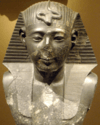 |
Menmaatre | 1290–1279 BC | KV17 | (Mut-)Tuya |
| Ramesses II | 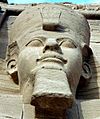 |
Usermaatre Setepenre | 1279–1213 BC | KV7 | Nefertari Isetnofret Maathorneferure Meritamen Bintanath Nebettawy Henutmire |
| Merneptah |  |
Baenre Merynetjeru | 1213–1203 BC | KV8 | Isetnofret II Takhat? |
| Seti II | 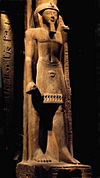 |
Userkheperure Setepenre | 1203–1197 BC | KV15 | Takhat? Twosret Tiaa |
| Amenmesse | 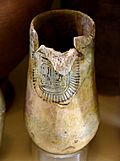 |
Menmire Setepenre | 1201–1198 BC | KV10 | Unknown |
| Siptah | 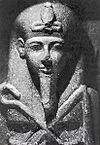 |
Sekhaienre Meryamun, later Akhenre Setepenre | 1197–1191 BC | KV47 | Unknown |
| Twosret | 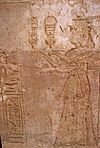 |
Sitre Meryamun | 1191–1189 BC | KV14 | None |
Timeline of the 19th Dynasty
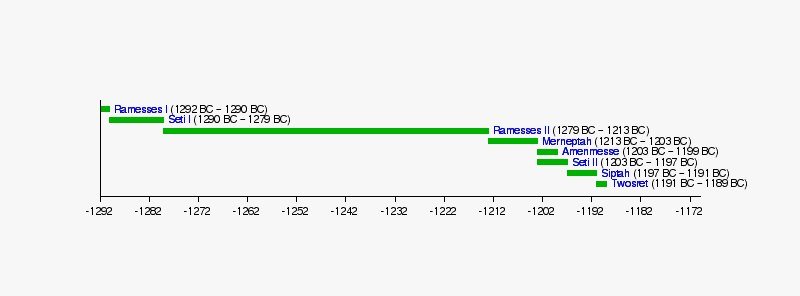
Images for kids
See also
 In Spanish: Dinastía XIX de Egipto para niños
In Spanish: Dinastía XIX de Egipto para niños





